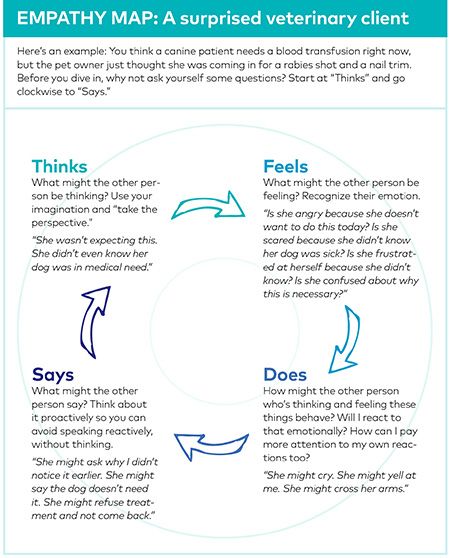Practice tip: Manage that conflict youre avoiding in your veterinary workplace
This empathy map helps you navigate the tension in your job (and your life!) that youve been avoiding. Key elements: Plan ahead, think about others feelings, and imagine how they might react.

Shutterstock.com
There are hundreds of books written about how to communicate with your fellow human beings. And there have been dozens of sessions at Fetch dvm360 conferences about communicating with veterinary team members and pet owners. And yet there's a conflict you're skirting around. You know the one. That irritating (or frightening or uncomfortable) conversation you know you should have-but don't.
It's time to get off the bench. Step one: Stop and ask yourself some questions, courtesy of Kimberly-Anne Therrien, DVM, and Sarah Wooten, DVM, from their session “Essential exchanges: Are you starting crucial conversations?” which was part of the Women's Veterinary Leadership Development Initiative track at Fetch dmv360 in Baltimore this year.
Take time to think …
… before tackling conversations like these, which were shared as conflicts by Fetch dvm360 Baltimore attendees:
Coworkers not doing their job or expecting you to do their work for them
Conflict with a significant other about your job or your dedication to animals
Mean coworkers who use the silent treatment or gossip as a weapon
Front-of-house vs. back-of-house issues
10-minute screaming matches between conflicting team members or doctors
Chronically late employees.
Do you face any of these? If you have the time to think about things beforehand, the conversations might go better (no guarantees).
The hard conversations and conflicts you're avoiding may not seem like it, “but they are opportunities for growth,” says Dr. Therrien.
Still, there's a reason you've avoided the conversation in the past. In these situations, emotions tend to be high and there's likely some kind of disagreement involved. In cases when you suspect the conversation could be charged, prepare in advance by taking time to think through the situation from the other person's perspective. This “empathy map” helps you do that. Here's what it looks like:

This is just the tip of the iceberg when it comes to thinking about how you listen and talk to people, but the act of planning ahead for difficult conversations or conflicts you've been avoiding could be the start to better solutions for you, your team, your clients and your patients.